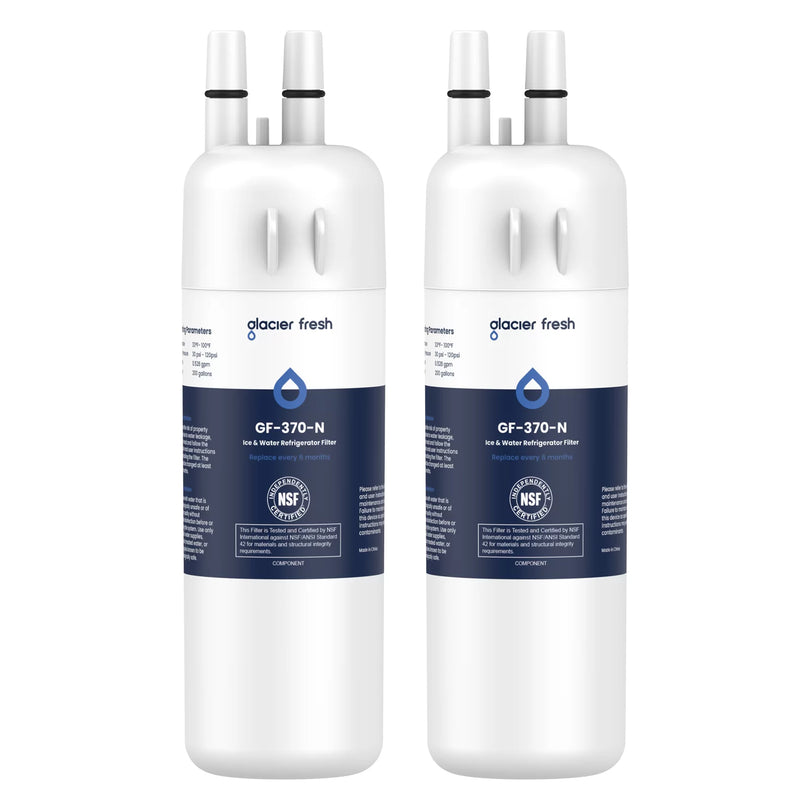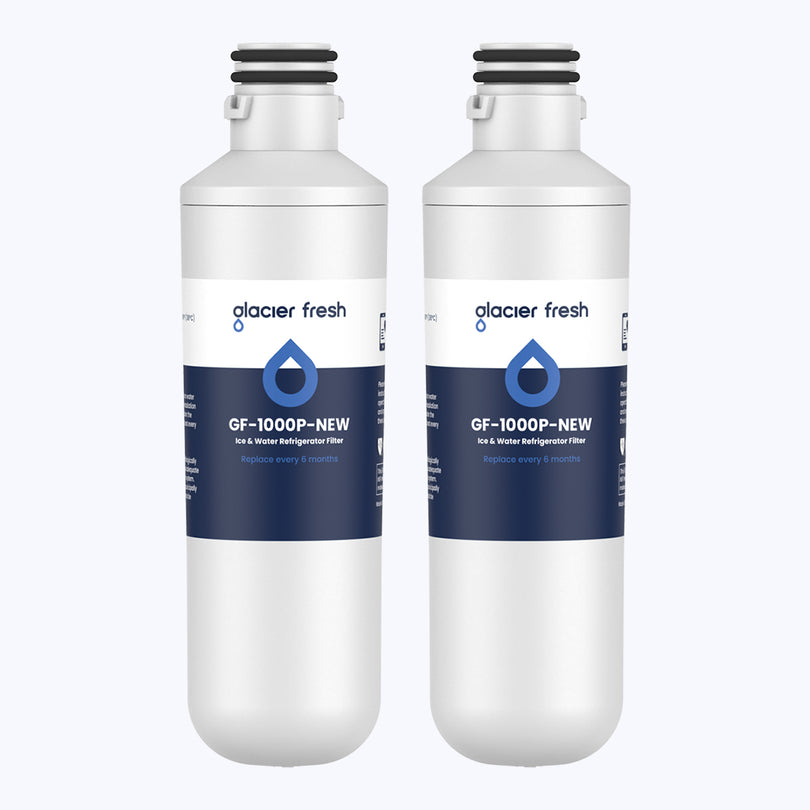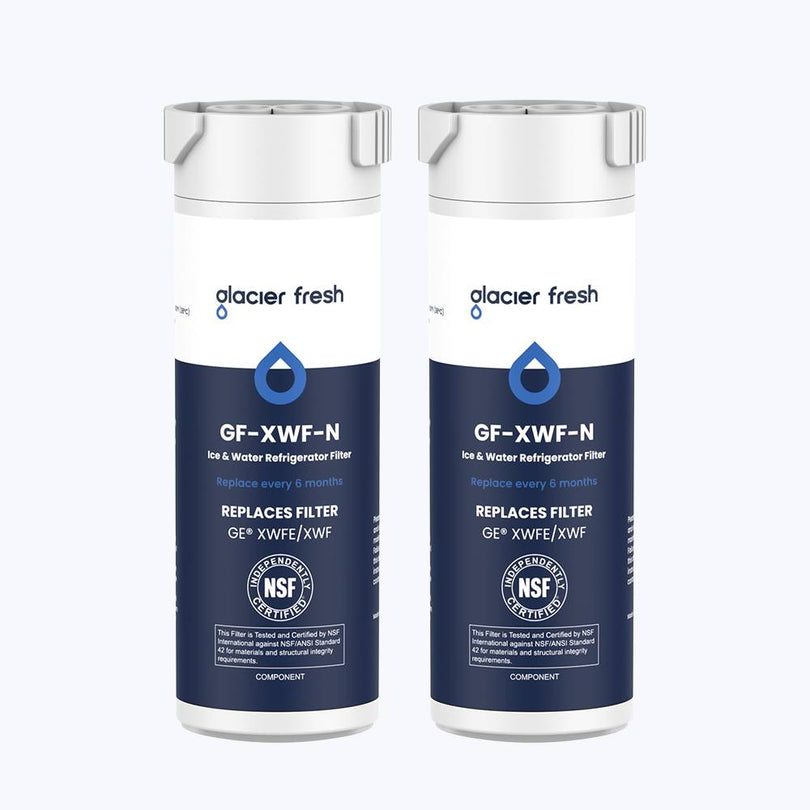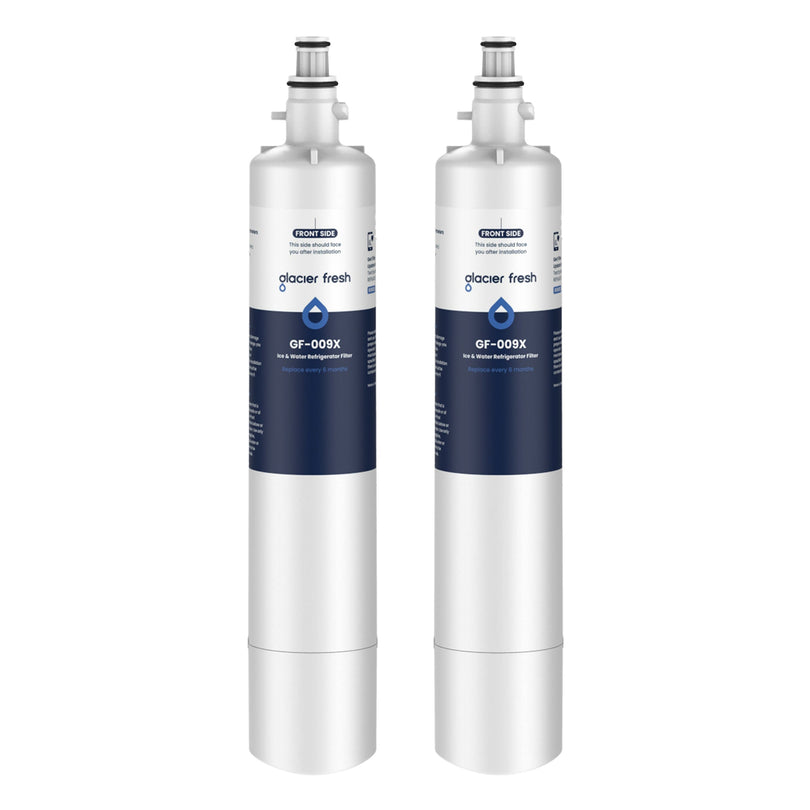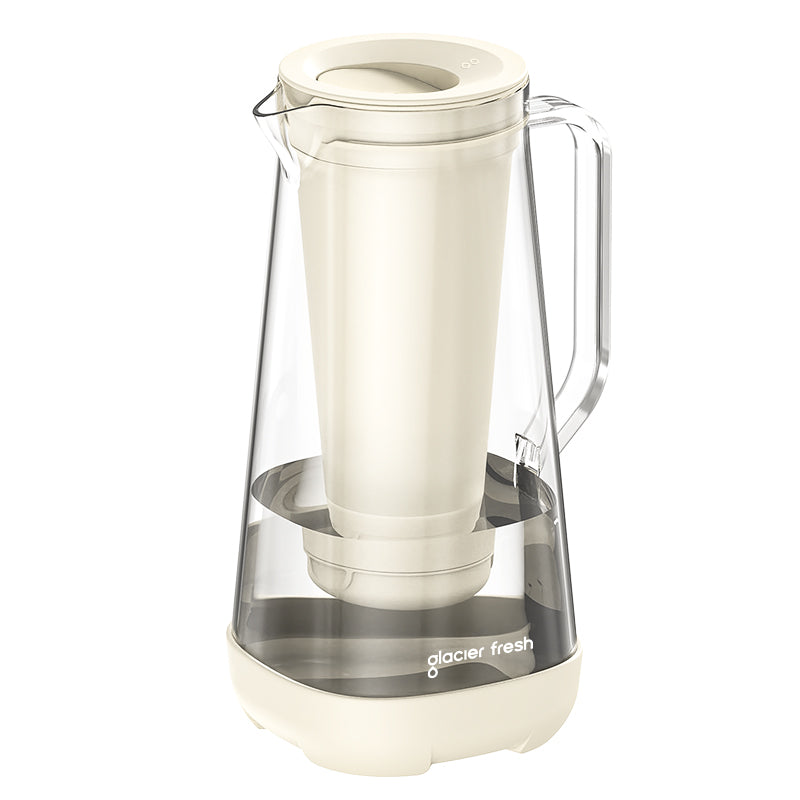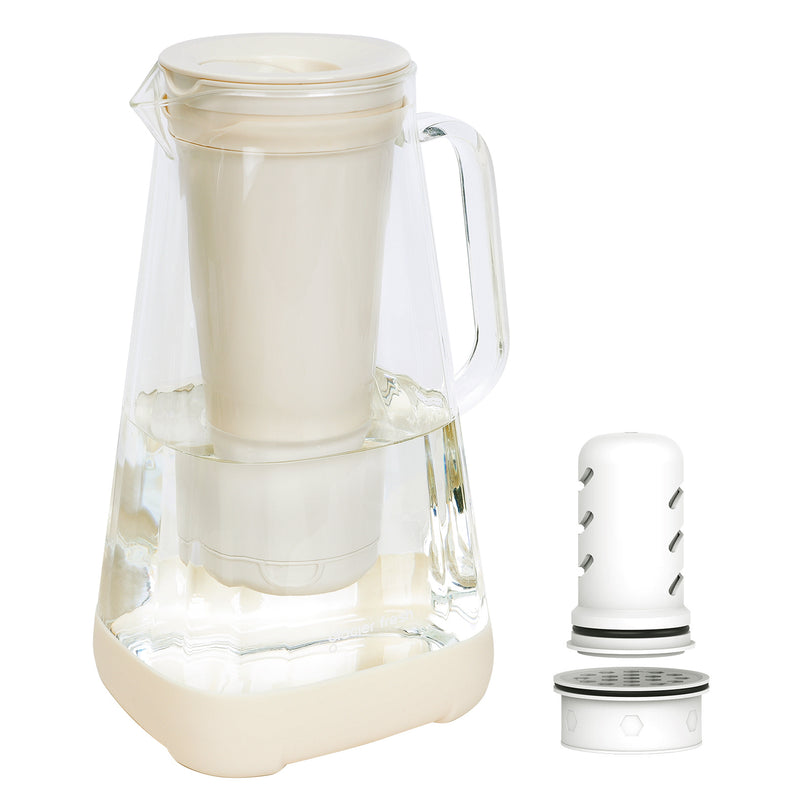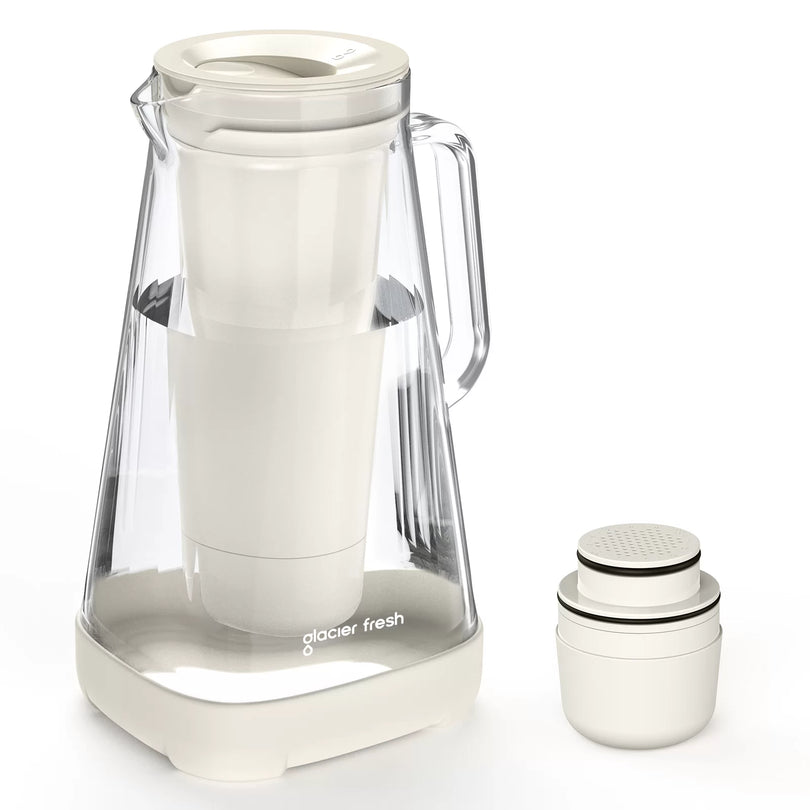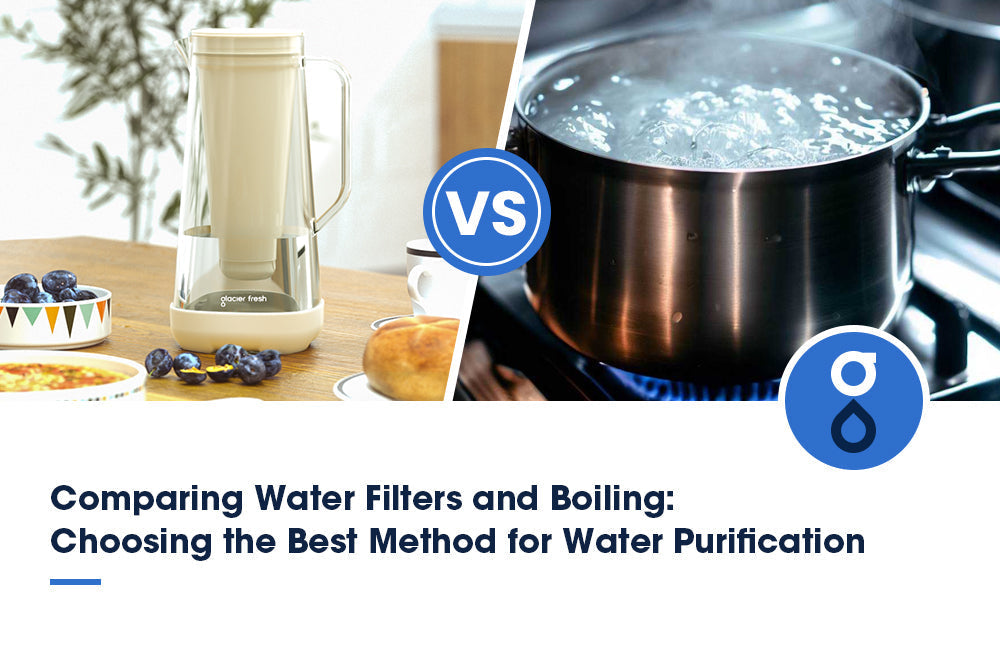Table of Contents:
Was ist Eisen?
Eisenquellen in Ihrem Trinkwasser
Im Trinkwasser vorkommende Eisenarten
Anzeichen dafür, dass Ihr Trinkwasser einen hohen Eisengehalt aufweist
Warum muss Eisen aus dem Trinkwasser entfernt werden?
Methoden zur Entfernung von Eisen aus Ihrem Trinkwasser
FAQs
Abschluss
Haben Sie es satt, Wasser zu trinken, das schmeckt, als wären Sie in die Eisenzeit zurückgekehrt? Keine Sorge! Diese Anleitung zeigt Ihnen, wie Sie Eisen aus Ihrem Trinkwasser entfernen.
Eisen, dieses lästige Mineral, das einen metallischen Geschmack im Mund hinterlassen kann, kann eine echte Plage sein. Es kann auch Ihre Sanitäranlagen und Kleidung verfärben und bei übermäßigem Konsum sogar gesundheitliche Probleme verursachen. Aber keine Angst, es gibt wirksame Methoden, um dieses Problem zu bekämpfen. Von Filtersystemen bis hin zu Wasserenthärtern – wir zeigen Ihnen die besten Möglichkeiten, Eisen aus Ihrem Wasser zu entfernen und so bei jedem Schluck einen sauberen und erfrischenden Geschmack zu gewährleisten. Also, tauchen Sie ein und verabschieden Sie sich ein für alle Mal von diesem rostigen Geschmack!
Was ist Eisen?

Eisen ist ein häufig vorkommendes metallisches Element in der Erdkruste. Es ist bekannt für seine Festigkeit und Rostneigung. Das Verständnis der Eigenschaften von Eisen ist entscheidend für den Umgang mit seinem Vorkommen im Trinkwasser. Eisen kann Geschmack, Geruch und Aussehen des Wassers beeinflussen und in hohen Konzentrationen auch gesundheitliche Auswirkungen haben. Deshalb ist es wichtig, Eisenfiltersysteme zu installieren, um sicherzustellen, dass Eisen aus Ihrem Trinkwasser entfernt wird.
Die Techniken zur Eisenentfernung variieren je nach Art und Konzentration des vorhandenen Eisens. Gängige Methoden sind Oxidation, Filtration und Ionenaustausch. Bei der Oxidation wird lösliches Eisen(II) in unlösliches Eisen(III) umgewandelt, das dann herausgefiltert werden kann. Filtersysteme verwenden häufig Aktivkohle oder spezielle Medien, um Eisenpartikel aufzufangen und zu entfernen. Zur Bestimmung des Eisengehalts Ihres Wassers stehen verschiedene Testmethoden zur Verfügung. Dazu gehören Sichtprüfungen, Wassertestkits oder Laboranalysen. Regelmäßige Tests sind unerlässlich, um die Wirksamkeit Ihres Eisenentfernungssystems zu überwachen und die Sicherheit Ihres Trinkwassers zu gewährleisten.
Eisenquellen in Ihrem Trinkwasser

Es gibt verschiedene Ursachen für Eisenverunreinigungen im Wasser. Eine häufige Ursache sind natürliche Ablagerungen im Boden, wo sich Eisen im Grundwasser lösen und in Ihren Wasserhahn gelangen kann. Eine weitere Ursache sind korrodierte Eisenrohre und Sanitäranlagen, insbesondere in älteren Häusern. Die Eisenpartikel können sich lösen und mit dem Wasser vermischen, was zu Verfärbungen und einem metallischen Geschmack führt.
Während die Einnahme kleiner Mengen Eisen nicht gesundheitsschädlich ist, kann eine übermäßige Eisenaufnahme negative Auswirkungen haben . Ein hoher Eisengehalt im Trinkwasser kann Magen-Darm-Probleme wie Magenkrämpfe und Durchfall verursachen. Außerdem kann Eisen Flecken auf Kleidung, Geräten und Armaturen hinterlassen, die rostig oder verfärbt aussehen.
Im Trinkwasser vorkommende Eisenarten
Wenn es um die Eisenarten in Ihrem Trinkwasser geht, werden Sie überrascht sein, dass es verschiedene Formen geben kann. Es ist wichtig, diese Arten zu verstehen, da sie unterschiedliche Auswirkungen auf Ihre Gesundheit, Ihre Rohrleitungen und die Gesamtqualität Ihres Wassers haben können. Hier sind vier häufige Eisenarten, die in Trinkwasser vorkommen können:
- Eisen(II)-Eisen : Dieses Eisen wird auch als lösliches Eisen bezeichnet und kommt üblicherweise in Brunnenwasser vor. Es ist bei der Entnahme klar, verfärbt sich jedoch an der Luft rötlich-braun. Eisen(II)-Eisen kann gesundheitliche Auswirkungen wie Magenkrämpfe und Darmprobleme verursachen.
- Eisen(III)-oxid : Diese Eisenform ist unlöslich und erscheint als rötlich-braune Partikel im Wasser. Es kann Flecken auf Armaturen und Wäsche verursachen und Rohre und Sanitäranlagen verstopfen.
- Bakterielles Eisen : Eisenbakterien sind Mikroorganismen, die sich von Eisen im Wasser ernähren und einen schleimigen Biofilm bilden. Dies kann zu verstopften Rohren, unangenehmem Geschmack und Geruchsproblemen führen.
- Organisches Eisen : Organisches Eisen entsteht, wenn sich Eisen mit organischen Stoffen verbindet. Es kann zu Fleckenbildung sowie Geschmacks- und Geruchsproblemen im Wasser führen.
Die Eisenbestimmung ist entscheidend, um die Eisenart und -konzentration in Ihrem Wasser zu bestimmen. Abhängig von den Ergebnissen können verschiedene Methoden zur Eisenentfernung eingesetzt werden, wie Oxidation, Filtration oder chemische Behandlung. Diese Methoden können je nach Brunnenwasser und kommunalen Wasserquellen variieren.
Anzeichen dafür, dass Ihr Trinkwasser einen hohen Eisengehalt aufweist

Wenn Sie einen erhöhten Eisengehalt in Ihrem Trinkwasser vermuten, gibt es verräterische Anzeichen, die Ihre Bedenken bestätigen können. Diese Anzeichen einer Eisenverunreinigung sind unangenehm und können negative Auswirkungen auf die Gesundheit haben. Die Prüfung des Eisengehalts im Trinkwasser ist entscheidend, um die Sicherheit Ihrer Wasserversorgung zu gewährleisten. Hier sind einige häufige Anzeichen für einen erhöhten Eisengehalt in Ihrem Trinkwasser:

Der Konsum von eisenhaltigem Wasser kann langfristige gesundheitliche Folgen haben. Eine Eisenüberladung kann zu schweren Erkrankungen wie Hämochromatose führen, die Leber, Herz und Bauchspeicheldrüse beeinträchtigt. Sie können versuchen, Eisen mit Heimwerkermethoden wie einem Eisenfilter, einem Wasserenthärter oder einem Belüftungssystem aus Ihrem Wasser zu entfernen. Es wird jedoch empfohlen, einen Fachmann zu konsultieren, um die ordnungsgemäße Entfernung von Eisenverunreinigungen sicherzustellen. Regelmäßige Tests und Aufbereitungen sind unerlässlich, um die Qualität und Sicherheit Ihres Trinkwassers zu gewährleisten.
Warum muss Eisen aus dem Trinkwasser entfernt werden?

Eisen kann sich negativ auf Ihre Gesundheit und Ihr Sanitärsystem auswirken. Hier sind einige wichtige Gründe, warum Sie Eisen aus Ihrem Wasser entfernen sollten:
- Auswirkungen auf die Gesundheit: Ein hoher Eisengehalt im Trinkwasser kann zu verschiedenen gesundheitlichen Problemen wie Magenbeschwerden, Durchfall und Verstopfung führen. Er kann auch den Geschmack und Geruch des Wassers beeinträchtigen und es unangenehm trinkbar machen.
- Sanitärprobleme: Zu viel Eisen im Wasser kann Rostflecken an Waschbecken, Toiletten und Geräten verursachen. Außerdem kann es Rohre verstopfen und den Wasserfluss reduzieren. Dies kann kostspielige Reparaturen und Austausch nach sich ziehen.
- Wasseraufbereitungsmöglichkeiten: Zur Entfernung von Eisen aus Trinkwasser stehen verschiedene wirksame Methoden zur Verfügung. Dazu gehören Oxidationsfiltration, Ionenaustausch und Umkehrosmose. Jede Methode hat ihre eigenen Vorteile und Kostenaspekte.
- Vorteile der Eisenentfernung: Die Entfernung von Eisen aus Ihrem Trinkwasser kann Geschmack und Geruch verbessern, Fleckenbildung an Ihren Armaturen verhindern und Ihr Sanitärsystem schützen. Es kann auch die Wirksamkeit anderer Wasseraufbereitungssysteme verbessern, die Sie möglicherweise bereits installiert haben.
Um die Sicherheit und Qualität Ihres Trinkwassers zu gewährleisten, ist es wichtig, den Eisengehalt regelmäßig zu testen. So können Sie die geeignete Wasseraufbereitungsmethode bestimmen und potenzielle Gesundheitsrisiken oder kostspielige Reparaturen minimieren.
Methoden zur Entfernung von Eisen aus Ihrem Trinkwasser

Wenn Ihr Trinkwasser Eisen enthält, können Sie es mit verschiedenen Methoden entfernen.
Filtersysteme
Eine effektive Methode zur Eisenentfernung aus Ihrem Trinkwasser ist die Verwendung von Filtersystemen wie der Umkehrosmose . Filtersysteme sind eine beliebte Methode zur Eisenentfernung und werden häufig in verschiedenen Wasseraufbereitungsanlagen eingesetzt. Diese Systeme leiten das Wasser durch ein Filtermedium, das Eisenpartikel auffängt und entfernt, wodurch saubereres und klareres Leitungswasser entsteht. Hier ist eine visuelle Darstellung verschiedener Filtersysteme zur Eisenentfernung aus Leitungswasser:

Diese Filtersysteme sind nur einige Beispiele für Wasseraufbereitungsmethoden zur Entfernung von Eisen aus Ihrem Trinkwasser. Berücksichtigen Sie Ihre spezifischen Bedürfnisse und wenden Sie sich an einen Fachmann, um das beste Filtersystem zu finden.
Oxidation
Um Eisen aus Ihrem Trinkwasser zu entfernen, können Sie Oxidationsmethoden anwenden. Oxidation ist ein Prozess, bei dem gelöstes Eisen in eine feste Form umgewandelt wird, wodurch es leichter entfernt werden kann. Hier sind vier effektive Eisenoxidationstechniken zur Aufbereitung Ihres Wassers:
- Belüftung : Bei dieser Methode wird dem Wasser Luft zugeführt, die die Eisenoxidation fördert. Durch den Kontakt mit der Luft verbinden sich die Eisenpartikel mit Sauerstoff und bilden unlösliche Rostpartikel, die herausgefiltert werden können.
- Chemische Oxidation : Eisen kann mit Chemikalien wie Chlor oder Kaliumpermanganat oxidiert werden. Diese Chemikalien reagieren mit dem Eisen, wodurch es ausfällt und sich absetzt, was eine einfache Entfernung ermöglicht.
- Katalytische Oxidation : Katalytische Medien wie Mangandioxid können verwendet werden, um die Oxidation von Eisen zu beschleunigen. Dieses Medium wirkt als Katalysator und beschleunigt die Reaktion zwischen Eisen und Sauerstoff.
- Ozonoxidation : Ozongas ist ein starkes Oxidationsmittel, das ins Wasser eingespritzt werden kann, um Eisen zu entfernen. Es reagiert mit dem Eisen und wandelt es in feste Partikel um, die herausgefiltert werden können.
Ionenaustausch
Sie können auch Ionenaustauschverfahren zur Entfernung von Eisen aus Ihrem Trinkwasser ausprobieren, was auf dem vorherigen Unterthema Oxidation aufbaut. Ionenaustausch ist eine weit verbreitete Technik zur Eisenentfernung in der Wasseraufbereitung. Bei diesem Verfahren wird ein Ionenaustauscherharz verwendet, das typischerweise aus Polystyrolkügelchen besteht. Das Harz ist mit Natriumionen beladen, und während das Wasser durch das Harz fließt, werden die Eisenionen im Wasser gegen die Natriumionen auf dem Harz ausgetauscht.
Dadurch wird Eisen aus dem Wasser entfernt. Der Ionenaustausch ist eine effektive Methode zur Eisenentfernung und wird häufig in Wasseraufbereitungssystemen eingesetzt. Wichtig ist, dass das Harz regelmäßig regeneriert werden muss, um seine Wirksamkeit bei der Eisenentfernung aufrechtzuerhalten.
FAQs
Kann ich durch Abkochen Eisen aus meinem Trinkwasser entfernen?
Sie können Ihr Trinkwasser nicht durch Abkochen von Eisen befreien. Zwar tötet das Abkochen von Wasser Bakterien und andere Mikroorganismen ab, Eisen wird dadurch jedoch nicht entfernt. Wenn Sie Eisen aus Ihrem Trinkwasser entfernen möchten, ist Abkochen nicht die Lösung.
Gibt es natürliche Methoden, um Eisen aus dem Wasser zu entfernen, beispielsweise durch die Verwendung bestimmter Pflanzenarten?
Bestimmte Pflanzenarten eignen sich als natürliche Methode zur Eisenentfernung aus Wasser. Die Verwendung von Pflanzen zur Wasserreinigung ist ein nachhaltiger und umweltfreundlicher Ansatz zur Entfernung von Eisen und anderen Verunreinigungen aus Ihrem Trinkwasser. Einige Pflanzen, wie Wasserhyazinthen, Lilien und Rohrkolben, können Eisen und andere Schwermetalle in ihren Wurzeln und Blättern aufnehmen und anreichern. Dieser als Phytoremediation bekannte Prozess kann eine effektive und kostengünstige Methode zur Wasseraufbereitung sein.
Abschluss
Wenn Ihr Trinkwasser einen hohen Eisengehalt aufweist, ist es wichtig, Maßnahmen zu ergreifen. Glücklicherweise gibt es verschiedene Methoden, um Eisen aus Ihrem Wasser zu entfernen. Eine Möglichkeit ist die Verwendung eines Wasserenthärters, der den Eisengehalt reduzieren kann.
Eine weitere Möglichkeit ist die Installation eines Eisenfilters, der speziell dafür entwickelt wurde, Eisenpartikel aus dem Wasser zu entfernen. Zusätzlich können chemische Oxidationsmittel eingesetzt werden, um das Wasser aufzubereiten und überschüssiges Eisen zu entfernen. So stellen Sie sicher, dass Ihr Trinkwasser sicher und frei von potenziellen Gesundheitsrisiken ist, die mit einem hohen Eisengehalt verbunden sind.
Folgen Sie Glacier Fresh , um weitere Wasserfilterlösungen zu finden.

